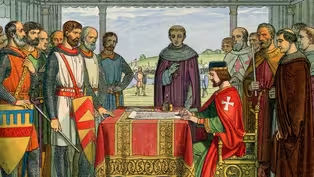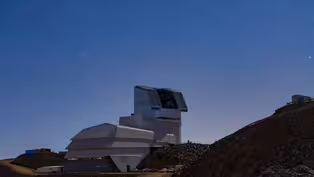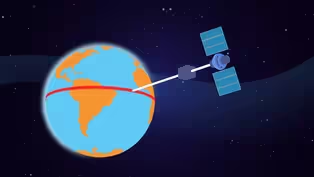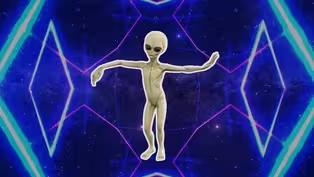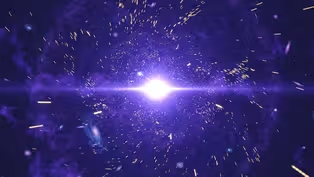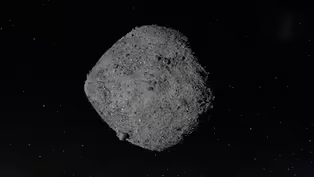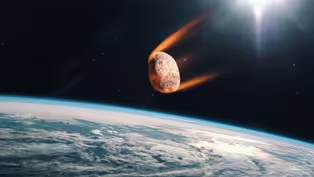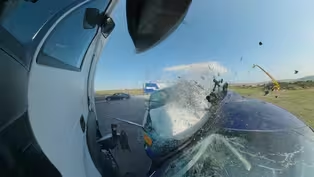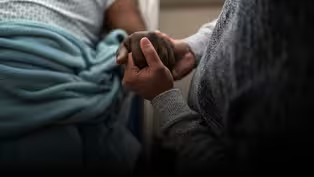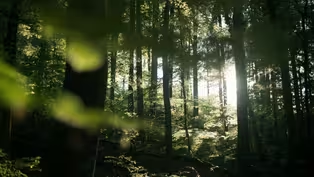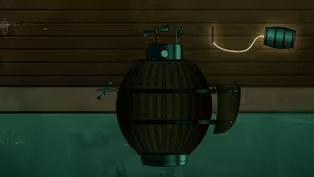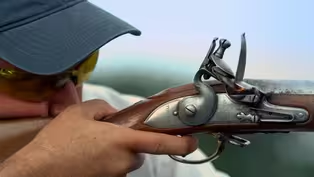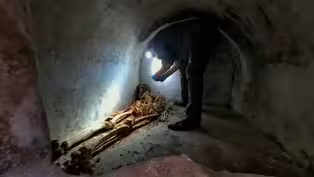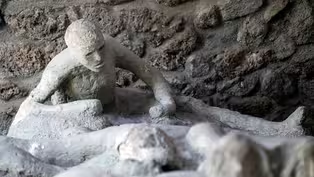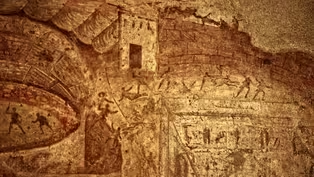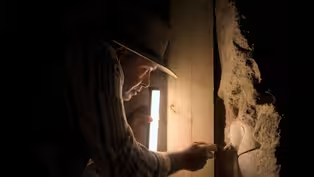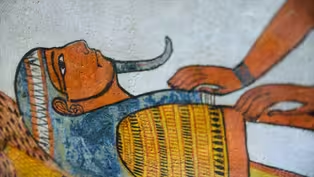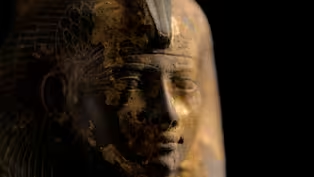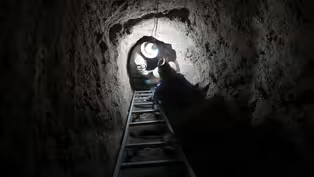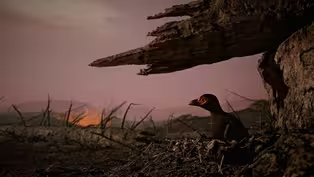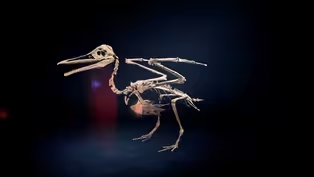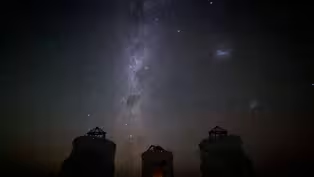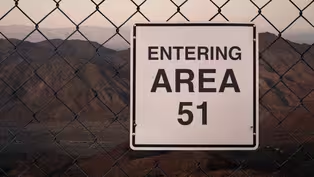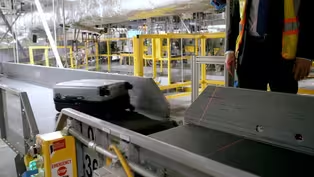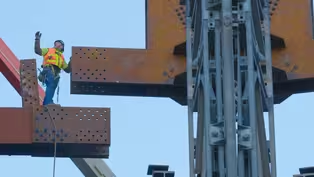
This Giant Telescope Will Reveal The Universe in Unbelievable Detail
Clip: Season 52 | 5m 59sVideo has Closed Captions
Go behind the scenes as NOVA visits the Vera Rubin Observatory in Chile.
Equipped with an 8.4-meter mirror and a 3.2-billion-pixel camera—the largest digital camera ever built for astronomy—the Rubin Observatory is poised to revolutionize how we see the cosmos. In just 10 hours of test observations, the telescope detected over 2,100 new asteroids.
Problems playing video? | Closed Captioning Feedback
Problems playing video? | Closed Captioning Feedback
National Corporate funding for NOVA is provided by Carlisle Companies. Major funding for NOVA is provided by the NOVA Science Trust, the Corporation for Public Broadcasting, and PBS viewers.

This Giant Telescope Will Reveal The Universe in Unbelievable Detail
Clip: Season 52 | 5m 59sVideo has Closed Captions
Equipped with an 8.4-meter mirror and a 3.2-billion-pixel camera—the largest digital camera ever built for astronomy—the Rubin Observatory is poised to revolutionize how we see the cosmos. In just 10 hours of test observations, the telescope detected over 2,100 new asteroids.
Problems playing video? | Closed Captioning Feedback
How to Watch NOVA
NOVA is available to stream on pbs.org and the free PBS App, available on iPhone, Apple TV, Android TV, Android smartphones, Amazon Fire TV, Amazon Fire Tablet, Roku, Samsung Smart TV, and Vizio.
Buy Now
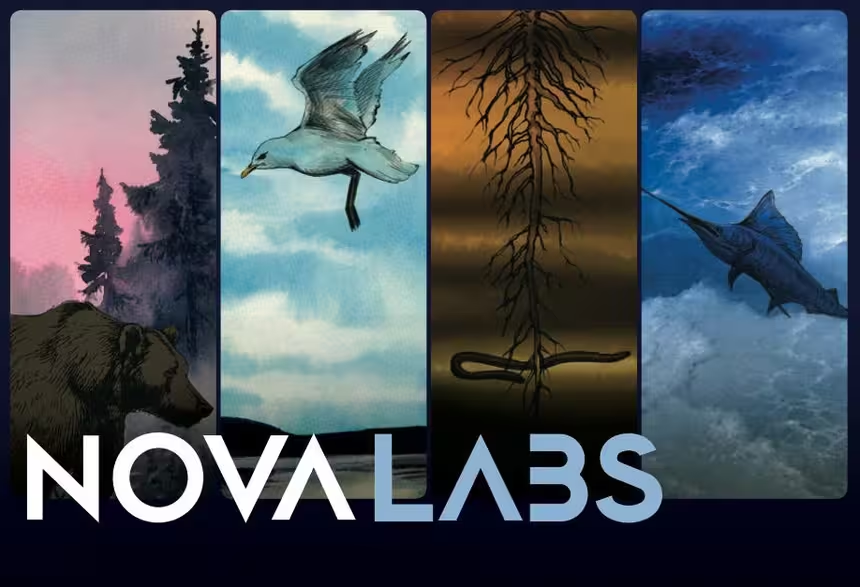
NOVA Labs
NOVA Labs is a free digital platform that engages teens and lifelong learners in games and interactives that foster authentic scientific exploration. Participants take part in real-world investigations by visualizing, analyzing, and playing with the same data that scientists use.Providing Support for PBS.org
Learn Moreabout PBS online sponsorship- [Narrator] These are some of the first images released by the new Vera Rubin Observatory, revealing a slice of the cosmos in more detail than ever before.
Nova was at the observatory in Chile as scientists fired up the entire system for the first time.
We'll show you the very first photo the telescope took in a moment.
But first, what is this thing and why does it have astronomers so excited?
- [Aaron] We call it dark energy, but we really don't know what it is.
- [William] Some people have spent 20 years waiting for this moment.
(people cheering) It's fantastic.
- [Narrator] The Vera Rubin telescope is massive.
It's equipped with an 8.4 meter mirror and Earth's largest digital camera.
- [Aaron] The camera has 3.2 billion pixels.
That is by far the largest digital camera ever built.
The camera has three lenses.
It's the largest lens ever built for astronomy, over five feet across.
- [Narrator] And it's collecting a ton of data quickly.
It is already discovered over 2,100 new asteroids in just 10 hours of test observations.
The telescope will gather more astronomical data in its first year than all the other optical telescopes in history combined.
It will image the entire southern night sky every three to four nights.
- [Aaron] The Rubin Observatory is unique in its capabilities.
We can do things that no other telescope can really do.
Compared to the space telescopes, Hubble or Webb, we see a huge part of the sky in every image, and we are designed to take images fast.
The camera can collect the image in a little over two seconds.
The telescope can move from one place to another in five seconds.
- [Narrator] Over time, researchers will be able to detect new distant objects and see how they change.
By observing them repeatedly and over the course of 10 years, they will put together a movie of the cosmos.
By then, they will have gathered about 60 million billion bytes of imagery.
- [Zeljko] And we anticipate we will have about 40 billion objects, not million, billion with B, in our images.
That will be the first time that astronomers cataloged more objects than there are living people on Earth.
- [Aaron] We'll see every part of the sky almost a thousand times.
That gives us an extra dimension too.
We'll see what changes.
So we'll discover tens of thousands, if not a hundred thousand, exploding stars, supernova.
We'll see millions of variable stars in our own galaxy, the Milky Way.
We'll see millions of asteroids, moving objects in the solar system, and I think we'll also be able to discover objects that change that we don't quite expect.
- [Narrator] These sorts of observations will help astronomers understand some of the biggest mysteries in the cosmos, like dark energy and dark matter, the mysterious stuff that make up most of the universe.
- Here's the galaxy.
- [Narrator] In fact, the telescope is named after famed astronomer, Vera Rubin, who first forced astronomers to confront the idea of dark matter.
Nova was there for the test in spring of 2025 when the team attempted to focus the camera and take the very first images.
But in the first test of the telescope, everything looked like... Cereal?
- [Sandrine] And after that first image, which looks like a bowl of Cheerios that you eat in the morning, we adjusted the optics in our telescope.
- [Narrator] The image appeared to show a series of rings because the telescope optics were not in proper focus.
To fix this, the team had to adjust the distance between the telescope's camera and its massive mirror, shifting the camera ever so slightly.
- [Robert] The question is, do we move it towards the mirror or do we move it away from the mirror?
And theoretically, we know, or else you can just guess and see if it gets better or worse.
- [Victor] Fifty-fifty.
- [Robert] I always go in a positive direction.
Think positively if you don't know any better.
- [Narrator] As the team fine-tuned the telescope systems... (team chattering) - Almost.
- [Narrator] The image became more and more clear.
(team cheering) - [Zeljko] We just acquired the greatest image in the history of astronomy.
Congratulations.
(team cheering) - [Sandrine] It's the first time this camera sees anything coming from the sky.
That was our first image, and it means a lot to me.
It might not be the prettiest image when you think about astronomy.
But to me, it was extremely rewarding and very beautiful.
- [Narrator] In June, 2025, the Rubin Telescope team released the first official images, revealing the Virgo Cluster, the closest collection of galaxies to us, and the Trifid and Lagoon Nebulae.
It's just the start of what promises to be a spectacular decade of discovery.
(ethereal music) Thanks for sticking around.
How Harvard Discovered It Has an Original Copy of the Magna Carta
Video has Closed Captions
Clip: S52 | 3m 13s | They paid only $27.50 for it from a London bookseller in 1946. (3m 13s)
This Giant Telescope Will Reveal The Universe in Unbelievable Detail
Video has Closed Captions
Clip: S52 | 5m 59s | Go behind the scenes as NOVA visits the Vera Rubin Observatory in Chile. (5m 59s)
The Science of Scratch-Offs: What Your Brain Can’t Resist
Video has Closed Captions
Clip: S52 | 6m 39s | You probably won’t win big playing the Lottery but your brain may want to keep trying. (6m 39s)
These Smart Glasses Know Who You Are, and Much More
Video has Closed Captions
Clip: S52 | 4m 18s | Two students created glasses that can identify people on the street, without them knowing. (4m 18s)
The Rocket-Less Future of Space Travel
Video has Closed Captions
Clip: S52 | 5m 17s | Space elevators? Nuclear rockets? The future of space travel could look radically different. (5m 17s)
Do Aliens Exist? This Famous Equation Offers a Clue
Video has Closed Captions
Clip: S52 | 5m 4s | The Drake Equation helps scientists estimate the odds of finding intelligent alien civilizations. (5m 4s)
Video has Closed Captions
Clip: S52 | 5m 7s | If the universe as we know it started with the Big Bang, will it also have an end? (5m 7s)
Building Blocks of Life Discovered on Distant Asteroid
Video has Closed Captions
Clip: S52 | 6m 3s | Scientists have discovered the building blocks of life in samples retrieved from a distant asteroid. (6m 3s)
This Asteroid Might Make Impact With Earth in 2032
Video has Closed Captions
Clip: S52 | 3m 33s | An asteroid is on a collision course with Earth, possibly making impact in 2032. (3m 33s)
Ultimate Crash Test: Countdown Preview
Video has Closed Captions
Preview: S52 Ep10 | 30s | A first-of-its-kind experiment aims to stage a multi-vehicle pileup to gain new data on car safety. (30s)
Critical Condition: Health in Black America Preview
Video has Closed Captions
Preview: S52 Ep9 | 30s | After centuries of pseudoscience, researchers examine the causes of racial health disparities. (30s)
Why Just Planting Trees Won’t Save the Planet
Video has Closed Captions
Clip: S52 Ep8 | 3m 4s | Could restoring lost forests help slow climate change? (3m 4s)
Video has Closed Captions
Preview: S52 Ep8 | 30s | Follow scientists in a quest to understand how complex forest ecosystems can help cool our planet. (30s)
The World’s First Combat Submarine
Video has Closed Captions
Clip: S52 Ep7 | 10m 49s | Its nickname was the “Turtle”. (10m 49s)
Revolutionary War Weapons Preview
Video has Closed Captions
Preview: S52 Ep7 | 30s | Explore key military technologies in the American colonies’ fight for freedom. (30s)
Video has Closed Captions
Clip: S52 Ep7 | 4m 57s | A team of experts put an 18th-century musket to the test — revealing how deadly it really was. (4m 57s)
What Went Wrong on the Dali Before the Baltimore Bridge Collapse
Video has Closed Captions
Clip: S52 Ep6 | 2m 57s | The container ship Dali lost power causing it to crash into Baltimore’s Key Bridge. (2m 57s)
What Caused Baltimore’s Key Bridge to Collapse?
Video has Closed Captions
Clip: S52 Ep6 | 2m 57s | Engineers explain how a vulnerability made the bridge open to catastrophe. (2m 57s)
Baltimore Bridge Collapse Preview
Video has Closed Captions
Preview: S52 Ep6 | 30s | Follow the investigation into the deadly container ship collision that closed the Port of Baltimore. (30s)
This Pompeii Priest Had an Unexpected Rise to Power
Video has Closed Captions
Clip: S52 Ep5 | 2m 58s | In a recently discovered tomb in Pompeii, archeologists made a startling discovery. (2m 58s)
Pompeii's Secret Underworld Preview
Video has Closed Captions
Preview: S52 Ep5 | 30s | Archaeologists uncover new truths about Pompeii, a wealthy Roman playground with dark secrets. (30s)
A Brutal Gladiator Fight in Ancient Pompeii
Video has Closed Captions
Clip: S52 Ep5 | 2m 37s | At a gladiator match in ancient Pompeii, tensions exploded and spectators became fighters in a riot. (2m 37s)
What's Inside These Ancient Egyptian Jars?
Video has Closed Captions
Clip: S52 Ep4 | 1m 58s | A nearly 3,000-year-old canopic jar is discovered in an Egyptian tomb. (1m 58s)
Opening a Sealed Egyptian Tomb
Video has Closed Captions
Clip: S52 Ep4 | 2m 38s | Archaeologists remove the mud brick seal of an unopened Egyptian tomb. (2m 38s)
How the Afterlife Shaped Ancient Egypt
Video has Closed Captions
Clip: S52 Ep4 | 1m 15s | Discover why the ancient Egyptians invested so much in life after death. (1m 15s)
The God’s Wife of Amun: Powerful Women in Ancient Egypt
Video has Closed Captions
Clip: S52 Ep4 | 3m 3s | Discover a time in Ancient Egypt when women held a role with extraordinary power. (3m 3s)
Video has Closed Captions
Preview: S52 Ep4 | 30s | A long lost ancient cemetery opens the door to a unique period in Egyptian history. (30s)
How Birds Survived the Dinosaur Apocalypse
Video has Closed Captions
Clip: S52 Ep3 | 2m 48s | Birds are today’s only living dinosaurs, but how did they survive the asteroid? (2m 48s)
How Birds Evolved to Fly (feat. Slow-Mo Baby Birds)
Video has Closed Captions
Clip: S52 Ep3 | 2m 56s | Slow-motion footage of baby birds helps scientists uncover how their ancestors took to the skies. (2m 56s)
Video has Closed Captions
Preview: S52 Ep3 | 29s | Fossils reveal how birds survived the killer asteroid and became today’s only living dinosaurs. (29s)
What You’re Probably Seeing If You Spot a UFO
Video has Closed Captions
Clip: S52 Ep1 | 2m 17s | Our skies are full of objects, natural and manmade, that are not as strange as you might think. (2m 17s)
Video has Closed Captions
Preview: S52 Ep1 | 30s | Can science reveal the secrets of mysterious objects seen in our skies? (30s)
Is the Government Hiding Information on UFOs?
Video has Closed Captions
Clip: S52 Ep1 | 1m 3s | What does the government know about UFOs? Experts weigh in on the need to identify these objects. (1m 3s)
Area 51: UFO Sightings and an Infamous Government Cover-Up
Video has Closed Captions
Clip: S52 Ep1 | 2m 35s | Area 51’s UFO myths became a cover for secret testing of cutting-edge military technology. (2m 35s)
What Happens to Your Checked Bag at the Airport?
Video has Closed Captions
Clip: S52 Ep2 | 2m 34s | Getting the right bag to the right plane requires an ingenious system. Here’s how it works. (2m 34s)
Extreme Airport Engineering Preview
Video has Closed Captions
Preview: S52 Ep2 | 30s | Follow the race to build a world-class airport on the site of one of America’s busiest flying hubs. (30s)
The $8 Billion Overhaul of LaGuardia Airport: Engineering a New Era
Video has Closed Captions
Clip: S52 Ep2 | 2m 12s | Discover how an $8 billion transformation turned LaGuardia into a state-of-the-art facility. (2m 12s)
Providing Support for PBS.org
Learn Moreabout PBS online sponsorshipSupport for PBS provided by:
National Corporate funding for NOVA is provided by Carlisle Companies. Major funding for NOVA is provided by the NOVA Science Trust, the Corporation for Public Broadcasting, and PBS viewers.

